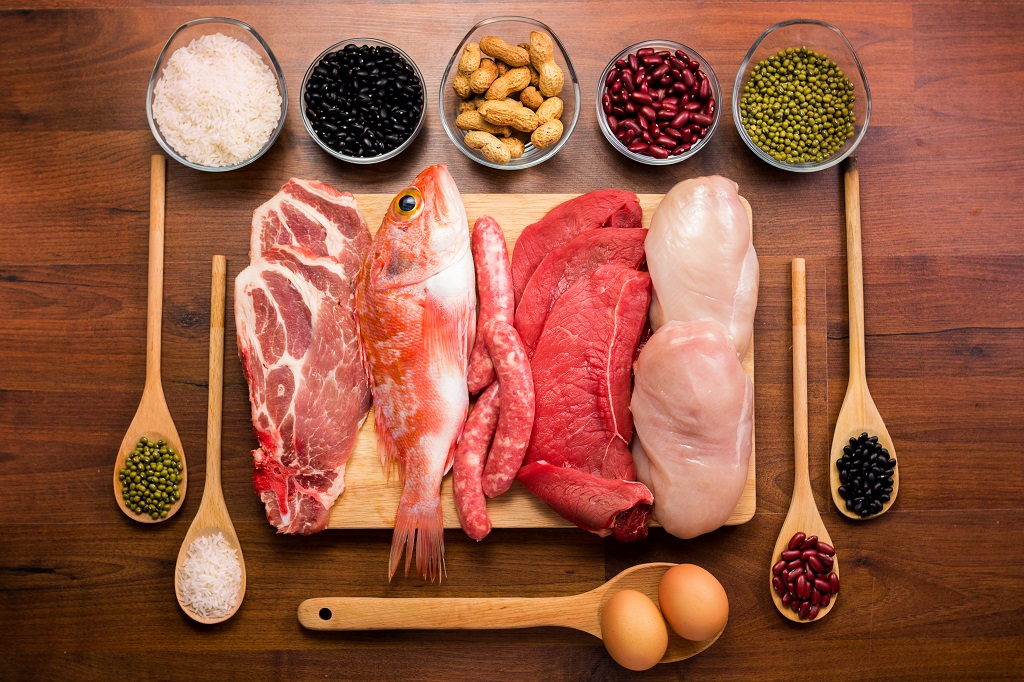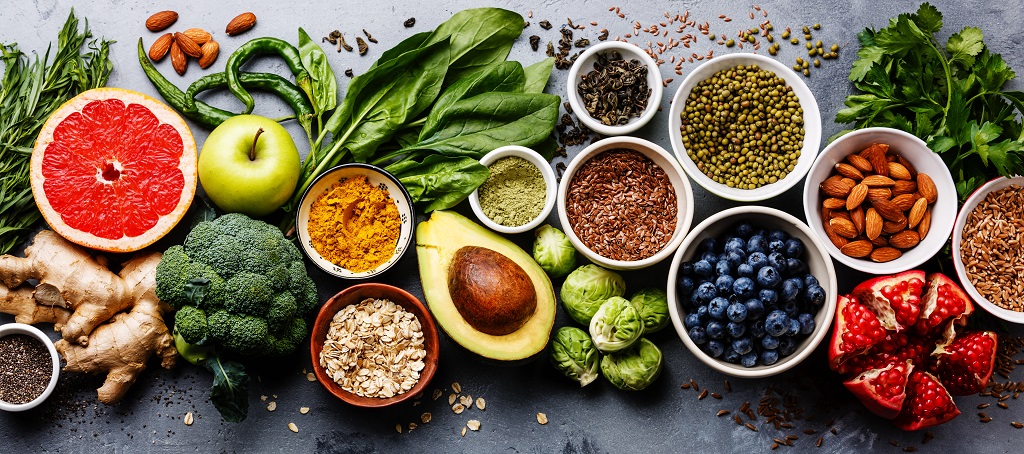New York
- Address:2972 Westheimer Rd. Santa &, Illinois 85486
- Phone:+8801761456456
- Email:[email protected]

Guide to Healthy Eating: Tips and Tricks for Success
Guide to Healthy Eating: Tips and Tricks for Success
Learn why Healthy Eating is Crucial for Women’s Health and Well-being
Healthy eating is crucial for everyone, but it is particularly important for women. A balanced and nutritious diet can help women maintain a healthy weight, reduce the risk of chronic diseases, and support their overall well-being. In this blog post, we will discuss the importance of healthy eating for women.
Maintaining a Healthy Weight
Maintaining a healthy weight is essential for overall health, particularly for women. Women are more likely than men to struggle with weight gain and obesity, which can increase the risk of chronic diseases such as type 2 diabetes, heart disease, and some cancers. A healthy diet that includes plenty of fruits, vegetables, whole grains, lean protein, and healthy fats can help women maintain a healthy weight.
Reducing the Risk of Chronic Diseases
A healthy diet can also help women reduce the risk of chronic diseases. For example, a diet rich in fruits, vegetables, and whole grains can help reduce the risk of heart disease, stroke, and certain types of cancer. Additionally, a diet low in sodium and saturated fats can help lower blood pressure and reduce the risk of heart disease.

Supporting Reproductive Health
Healthy eating is particularly important for women’s reproductive health. A nutritious diet can help support fertility and a healthy pregnancy. For example, a diet that includes plenty of folic acid, iron, and calcium can help reduce the risk of birth defects and support a healthy pregnancy. Additionally, a healthy diet can help reduce the risk of gestational diabetes, pre-eclampsia, and other pregnancy-related complications.
Improving Energy Levels and Mental Health
A healthy diet can also improve women’s energy levels and mental health. A diet rich in fruits, vegetables, whole grains, and lean protein can provide the nutrients necessary for energy production and mental clarity. Additionally, certain nutrients such as omega-3 fatty acids and vitamin D can support brain health and reduce the risk of depression and anxiety.

Maintaining Bone Health
As women age, they become more susceptible to bone loss and osteoporosis. A healthy diet that includes plenty of calcium, vitamin D, and magnesium can help maintain bone health and reduce the risk of fractures. Additionally, regular exercise can help improve bone density and reduce the risk of falls.
Supporting Healthy Aging
Healthy eating can also support healthy aging in women. A diet that is rich in antioxidants and anti-inflammatory nutrients can help reduce the risk of age-related diseases such as Alzheimer’s disease and dementia. Additionally, a healthy diet can help maintain cognitive function, physical function, and overall quality of life as women age.
Healthy eating is essential for women’s overall health and well-being. A balanced and nutritious diet can help women maintain a healthy weight, reduce the risk of chronic diseases, support reproductive health, improve energy levels and mental health, maintain bone health, and support healthy aging. Women should aim to eat a variety of fruits, vegetables, whole grains, lean protein, and healthy fats to ensure they are getting the nutrients necessary for optimal health. Additionally, women should aim to limit their intake of processed and high-sugar foods, as these can increase the risk of chronic diseases and weight gain.
The Essential 7-Step Guide to Healthy Eating for Women of All Ages
Healthy eating is a crucial aspect of a healthy lifestyle. It can help prevent various chronic diseases such as obesity, heart diseases, and diabetes. However, healthy eating doesn’t have to be complicated or expensive. With a few simple changes, you can easily incorporate healthy eating habits into your daily routine. In this blog post, we will discuss a 7 step guide to healthy eating that can help you achieve a healthier lifestyle.
Step 1: Start with a Healthy Breakfast
Breakfast is the most important meal of the day. It helps jump-start your metabolism and provides the energy you need for the day ahead. A healthy breakfast should include protein, complex carbohydrates, and healthy fats. Some examples of healthy breakfast foods are oatmeal, whole-grain toast with avocado and eggs, or a smoothie with fruit and protein powder.

Step 2: Plan Your Meals
Planning your meals can help you make healthier food choices and save time and money. You can plan your meals for the week ahead and make a grocery list based on the ingredients you need. This can help you avoid impulse buys and prevent unhealthy snacking. Make sure to include a variety of fruits, vegetables, whole grains, lean protein, and healthy fats in your meals.
Step 3: Incorporate Fruits and Vegetables into Your Diet
Fruits and vegetables are essential sources of vitamins, minerals, and fiber. Incorporating them into your diet can help reduce the risk of chronic diseases and maintain a healthy weight. Aim to eat at least 5 servings of fruits and vegetables per day. You can include them in your meals as snacks, salads, or side dishes.
Step 4: Choose Whole Grains
Whole grains are a great source of fiber, vitamins, and minerals. They can help regulate blood sugar levels, reduce the risk of heart diseases, and promote digestive health. Choose whole-grain bread, pasta, rice, and cereals instead of refined grains. You can also incorporate other whole grains such as quinoa, barley, and bulgur into your meals.
Step 5: Include Lean Protein Sources
Protein is essential for building and repairing tissues in the body. Choose lean protein sources such as chicken, turkey, fish, legumes, and tofu. Avoid processed and fatty meats such as bacon, sausage, and hot dogs. Incorporate protein into your meals by adding it to salads, soups, and stir-fries.

Step 6: Limit Sugar and Salt Intake
Excess sugar and salt intake can lead to various health problems such as obesity, high blood pressure, and heart diseases. Limit your intake of processed foods and drinks that are high in sugar and salt. Instead, choose whole foods and flavor your meals with herbs, spices, and healthy oils.
Step 7: Stay Hydrated
Water is essential for maintaining proper bodily functions such as digestion, temperature regulation, and nutrient absorption. Aim to drink at least 8 glasses of water per day. You can also include other hydrating beverages such as herbal tea and coconut water in your diet.

Incorporating healthy eating habits into your daily routine can help you achieve a healthier lifestyle. Follow this 7 step guide to healthy eating to make simple changes in your diet that can lead to significant health benefits. Remember to start with a healthy breakfast, plan your meals, incorporate fruits and vegetables, choose whole grains, include lean protein sources, limit sugar and salt intake, and stay hydrated. With these simple steps, you can achieve a healthier, happier you
Author
Andrea Klas
Andrea Klas, is founder of Andrea Klas Fitness and Andrea Klas Whole Body Fitness. With over 25 years of experience as a successful competitive athlete, and 15 yrs as a Personal Trainer, and Nutrition coach Andrea knows what it takes to be fit, lean and healthy. She has revolutionised the fitness industry with her steadfast commitment to focusing on fat loss, not weight loss and has helped 100’s of women in peri-menopause and menopause lose fat and gain muscle. Compassionate and caring Andrea is committed to helping every client be fit and healthy. Andrea is an entrepreneur, mentor, trusted advisor, speaker, athlete, and mom of 3 boys and lives by her philosophy : EAT real food, LIFT weights, LOVE yourself enough to invest in your health and LIVE your best life.










